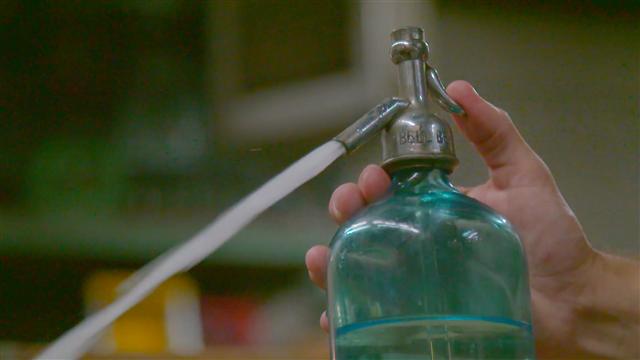
The New Summer Beverage: Seltzer!
There was a time when seltzer water was all the rage in America. People used to flock to small shops (“soda fountains”) to consume fruit drinks with a special zing thanks to carbonated water. Local seltzer distributors delivered big glass bottles of the water door to door.
Then along came soda “pop” – mainly Coca-Cola and Pepsi – and the demand for seltzer took a big hit.
With suburbanization, patrons of the old shops moved away Local seltzer manufacturers stopped making the stuff.
The seltzer market lost its fizz – apparently for good.
But now seltzer is back – and it’s bigger than ever. In fact, it’s even starting to rival the soft drink market.
Seltzer is a simple product that has the advantage of being perceived as a 100% “pure” water drink. It has no sugar or other additives so it avoids the unhealthy downsides of soft drinks.
Seltzer is not alone, of course. Sales of “natural” spring water and mineral water are also booming. But the markets for the two kinds of products are distinct.
Seltzer – with its bubbles and raspy taste sensation — holds a unique consumer appeal.
There were earlier signs of revival. Perrier and San Pellegrino catered to elite consumers beginning some two decades ago. And some seltzer products like Club Soda and Schweppes – usually called “sparkling” water – have survived in their small niches for years.
But it took the appearance of the Wisconsin-based La Croix for the market to experience a real effervescence. La Croix had the backing of a major social media campaign and was targeted at Millennials. Its pastel design and flashy fonts had strong visual appeal.
By 2018, La Croix had captured 33% of the seltzer market, up from just 7% four years earlier. Sales had reached $800 million, compared to $318 million for Perrier, $214 million for San Pellegrino, and just $66 million for Schweppes, according to the consumer research firm Euromonitor.
Sales of the drink were surging so fast that some predicted La Croix would soon become the industry’s Coca-Cola – possibly gaining as much as 50% market share.
But then the big soft drink companies began developing their own seltzer water products (Pepsi, for example, developed Bubly). And a number of lawsuits hit.
La Croix has been accused of everything from using BPA in its cans to including an ingredient similar to rat poison in the manufacture of its water.
It will likely take years for La Croix to fend off these suits, many of them emanating from jealous competitors.
But rest assured: the seltzer market will keep growing. Coke has introduced a new sparkling water product, Topo Chico, manufactured in Mexico, that has a near cult following. And new seltzer products – some of them billed as “craft” brands — are appearing almost weekly.
And there’s another emerging trend: Beer products based on carbonated water.
Beer is naturally carbonated, of course, during the fermentation process, and most commercial beers are forced carbonated just like seltzer water. But the idea now is to begin with seltzer water – and then “spike” it with alcohol.
Boston Beer, a division of Sam Adams, is one pioneer but expects others to follow. It’s a sign of just how popular the seltzer market has become.
With exponential sales, scrutiny of seltzer is bound to grow. But is it really as healthy as it sounds? One issue is its acid content. Some argue that carbonated water contains carbonic acid which can wear away tooth enamel.
Seltzer enthusiasts say that’s total nonsense. It’s the citric acid in the fruit flavoring of many seltzer drinks (like nearly all of La Croix’s, in fact) that’s the potential problem.
In any event, seltzer has far less acid content than soft drinks, they insist.
There is strong research evidence that seltzer can improve your digestion but the evidence that it improves your heart health or lowers your cholesterol is still limited.
Also, evidence suggests that seltzer allows you to retain food in your stomach longer than still water does; that could give you a greater sense of “fullness” and “satisfaction” from eating.
There may be something distinctly American about seltzer. Europeans are drawn to their mineral water. It’s rarefied. Seltzer just pops and fizzes. It’s easy to make. It mixes with everything,
Seltzer wasn’t a passing fad a century ago. With more research, it’s likely to become as central to consumer well-being as it once was.

Recent Comments